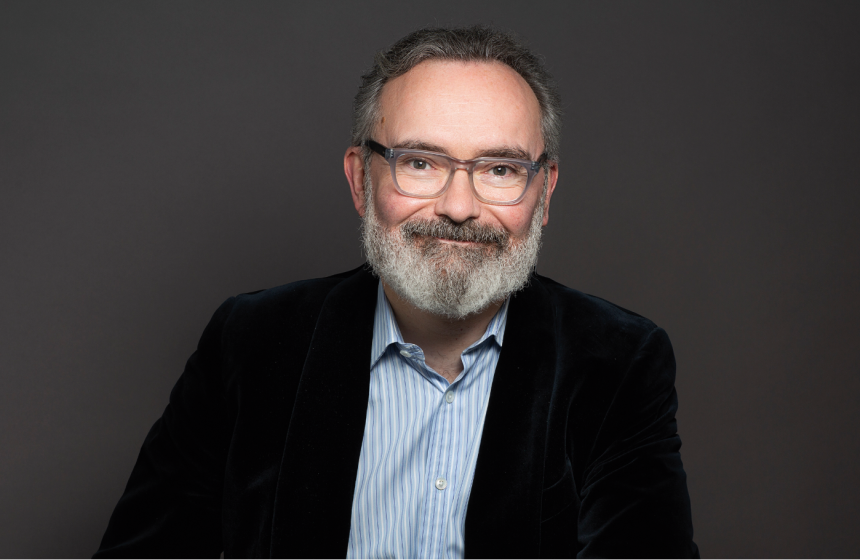CEO Arte Generali: „There are still many collections that are not insured at all“

Jean Gazançons vision is to position Arte Generali worldwide as a Lifetime Partner. Prior to his position at Arte Generali he worked for several years for Axa (Bildquelle: Generali)
Am Wochenende startet die Kunstmesse The European Fine Art Foundation (TEFAF). Tragende Säule des Geschäfts sind auch Kunstversicherer, darunter die Arte Generali. CEO Jean Gazançon spricht im VWheute-Interview über Trends, Generalis Markteintritt und die bestehende Versicherungslücke.
VWheute: In the specific field of fine art and specie, how do you rate the current price discipline? Are terms and conditions hardening?
Jean Gazançon: Following the series of natural disasters, the market has known in its principal geographies, North America and Europe, we have seen a stop in price sliding. We are naturally careful in underwriting those risks and follow specific assessments regarding natural disasters. This is also why we put a lot of emphasis on risk prevention to make sure that our clients are well-equipped and prepared in case of catastrophes.
VWheute: In what direction are sums insured trending?
We encourage clients to regularly perform a reevaluation of their works to keep the values updated and with that the insurance cover adequate. To support our clients in this, it is important for us to be as close to the market as possible. In this context, we are partnering with Wondeur AI, a company that is at the forefront of AI in the art market. Our clients benefit from this cooperations by having access to the market insight as provided by Wondeur AI for example via our dedicated App to be comprehensively informed.
VWheute: In particular reinsurers repeat the mantra of the „Insurance gap“, i.e. the delta between the societal need for insurance coverage and the risk transfer that is actually contracted, in particular concerning government risks. Is there also a specific insurance gap as regards fine art insurance?
There is also an „insurance gap“ that we observe in the art insurance sector. Especially when it comes to private risks, there are still many collections that are not insured at all, or not insured in a way that takes the special „needs“ of art into account. That means especially regarding the coverage and the claims handling, but certainly also with regards to the level of expertise you can expect from a specialized Underwriter for art. Art has an emotional value besides the obvious financial one and to preserve that you need to be able access expert advice and network.
When it comes to exhibitions, especially high insurance value exhibitions, state indemnity plays an increasingly important role. However, it is important to look at the individual coverage and processes behind the respective cover and to tie in commercial insurance to cover the gaps in coverage, but also in expertise.

VWheute: With the benefit of hindsight, how ideal was the timing for Arte Generali’s market entry?
We were lucky to launch our activity in November 2019, before the Covid epidemic crisis. Our shareholder was strongly committed, and we were able to pass 2020 and 21 when it was very difficult to meet brokers and clients. Nevertheless, it has enabled us to launch in more countries and with more products and service culture, making our offer more distinctive and compelling. It has strengthened the team and made us highly resilient. As Friedrich Nietzsche wrote: What doesn’t kill us, makes us stronger.
VWheute: To what extent are you prepared to cover Insurance provenance risks?
This is not part of our offer, and we do not intend to include it considering the high anti selection risk it bodes.
VWheute: In view of the increasing reglementation of the fine art market as regards AML standards, do you consider offering any particular regulatory non-compliance/legal defence coverage to market professionals?
While we are of course following the AML standards and the developments in this field, we are not offering any particular coverage to market professionals. This is part of a larger and complicated conversation where art insurance is only a part of.

VWheute: As various professionals (fine art experts, lawyers, tax advisors, laboratories) join to facilitate the marketing of individual major works of art, often in xs of the 100m Dollar mark, is there now coverage available similar to prospectus liability insurance (which concerns IPOs)?
While this is an interesting aspect of this development on the art market, the way transactions are organized has not yet reached the maturity of sales and purchase agreement (SPA) and therefore does not warrant the legal and financial basis of a proper cover.
VWheute: Do you have any views re the potential legal liability of auction houses, cf. the very recent Rybolovlev vs. Sotheby’s litigation in New York?
In this specific case, Sotheby’s was vindicated. Moving forward, the existence of multiple roles within auction houses will certainly require the disclosure of compliance rules to reduce the risk of interest conflicts.
VWheute: There continue to be press reports about the reappearance of stolen art. In such situations, who has the legal title, who receives the objects?
When the stolen pieces were insured and their legitimate owners indemnified, the insurance companies become the legitimate owner. In case the artwork is rediscovered, this means that the legal title is with the insurer. Naturally transactions with the original owner can be considered afterwards.
VWheute: Does Generali consider cooperating with private banks and/or luxury goods purveyors who are focused on a similar client target group?
We are already operating with our colleagues of Banca Generali in Italy, as well as other private banks in the different countries we are operating.
Questions: Philipp Thomas
